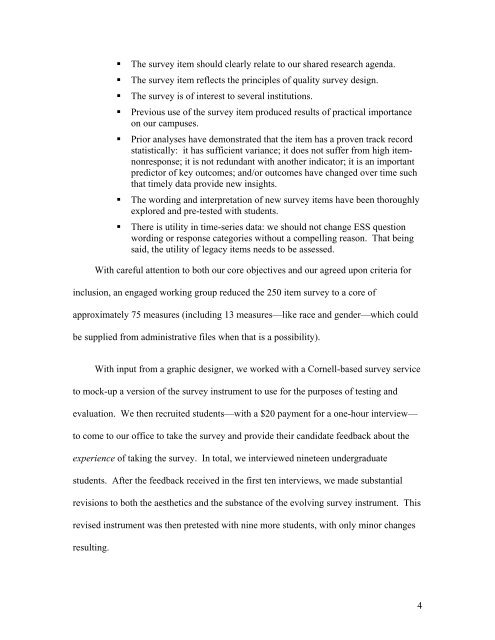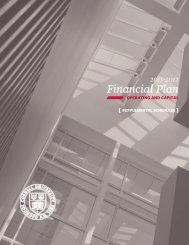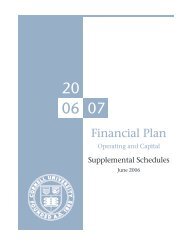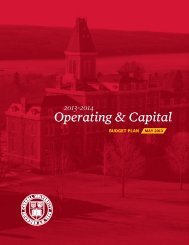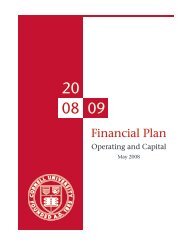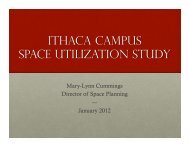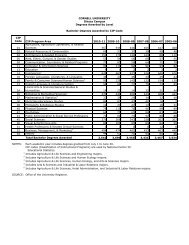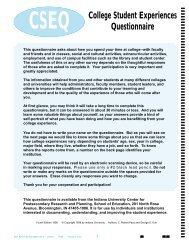Survey Design and Response Rates: - Cornell University Division of ...
Survey Design and Response Rates: - Cornell University Division of ...
Survey Design and Response Rates: - Cornell University Division of ...
Create successful ePaper yourself
Turn your PDF publications into a flip-book with our unique Google optimized e-Paper software.
• The survey item should clearly relate to our shared research agenda.<br />
• The survey item reflects the principles <strong>of</strong> quality survey design.<br />
• The survey is <strong>of</strong> interest to several institutions.<br />
• Previous use <strong>of</strong> the survey item produced results <strong>of</strong> practical importance<br />
on our campuses.<br />
• Prior analyses have demonstrated that the item has a proven track record<br />
statistically: it has sufficient variance; it does not suffer from high itemnonresponse;<br />
it is not redundant with another indicator; it is an important<br />
predictor <strong>of</strong> key outcomes; <strong>and</strong>/or outcomes have changed over time such<br />
that timely data provide new insights.<br />
• The wording <strong>and</strong> interpretation <strong>of</strong> new survey items have been thoroughly<br />
explored <strong>and</strong> pre-tested with students.<br />
• There is utility in time-series data: we should not change ESS question<br />
wording or response categories without a compelling reason. That being<br />
said, the utility <strong>of</strong> legacy items needs to be assessed.<br />
With careful attention to both our core objectives <strong>and</strong> our agreed upon criteria for<br />
inclusion, an engaged working group reduced the 250 item survey to a core <strong>of</strong><br />
approximately 75 measures (including 13 measures—like race <strong>and</strong> gender—which could<br />
be supplied from administrative files when that is a possibility).<br />
With input from a graphic designer, we worked with a <strong>Cornell</strong>-based survey service<br />
to mock-up a version <strong>of</strong> the survey instrument to use for the purposes <strong>of</strong> testing <strong>and</strong><br />
evaluation. We then recruited students—with a $20 payment for a one-hour interview—<br />
to come to our <strong>of</strong>fice to take the survey <strong>and</strong> provide their c<strong>and</strong>idate feedback about the<br />
experience <strong>of</strong> taking the survey. In total, we interviewed nineteen undergraduate<br />
students. After the feedback received in the first ten interviews, we made substantial<br />
revisions to both the aesthetics <strong>and</strong> the substance <strong>of</strong> the evolving survey instrument. This<br />
revised instrument was then pretested with nine more students, with only minor changes<br />
resulting.<br />
4


